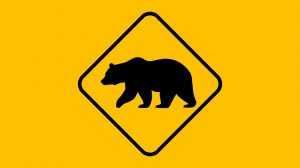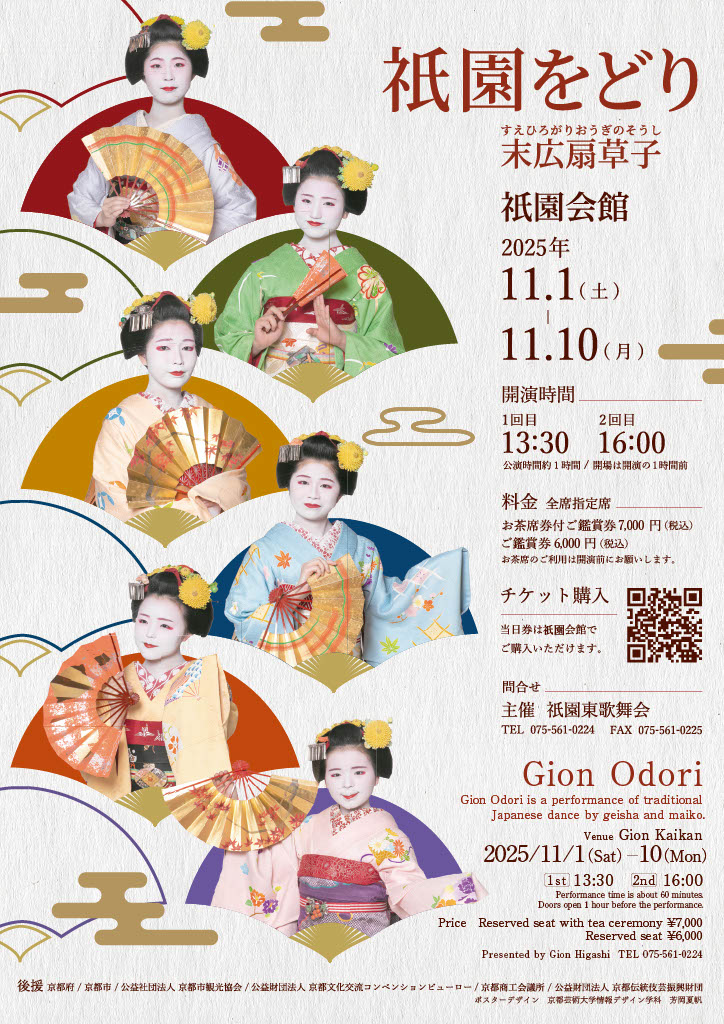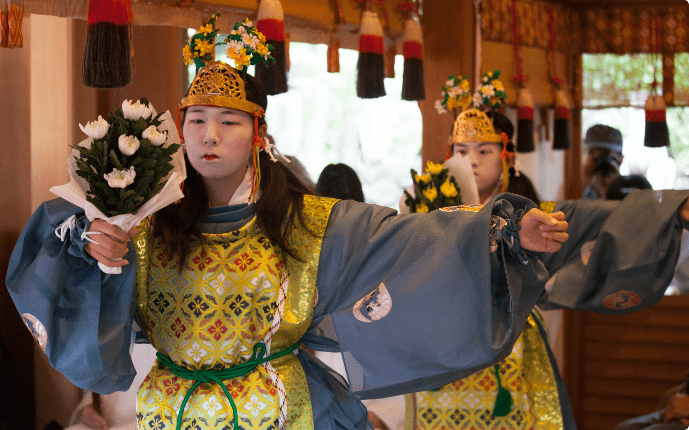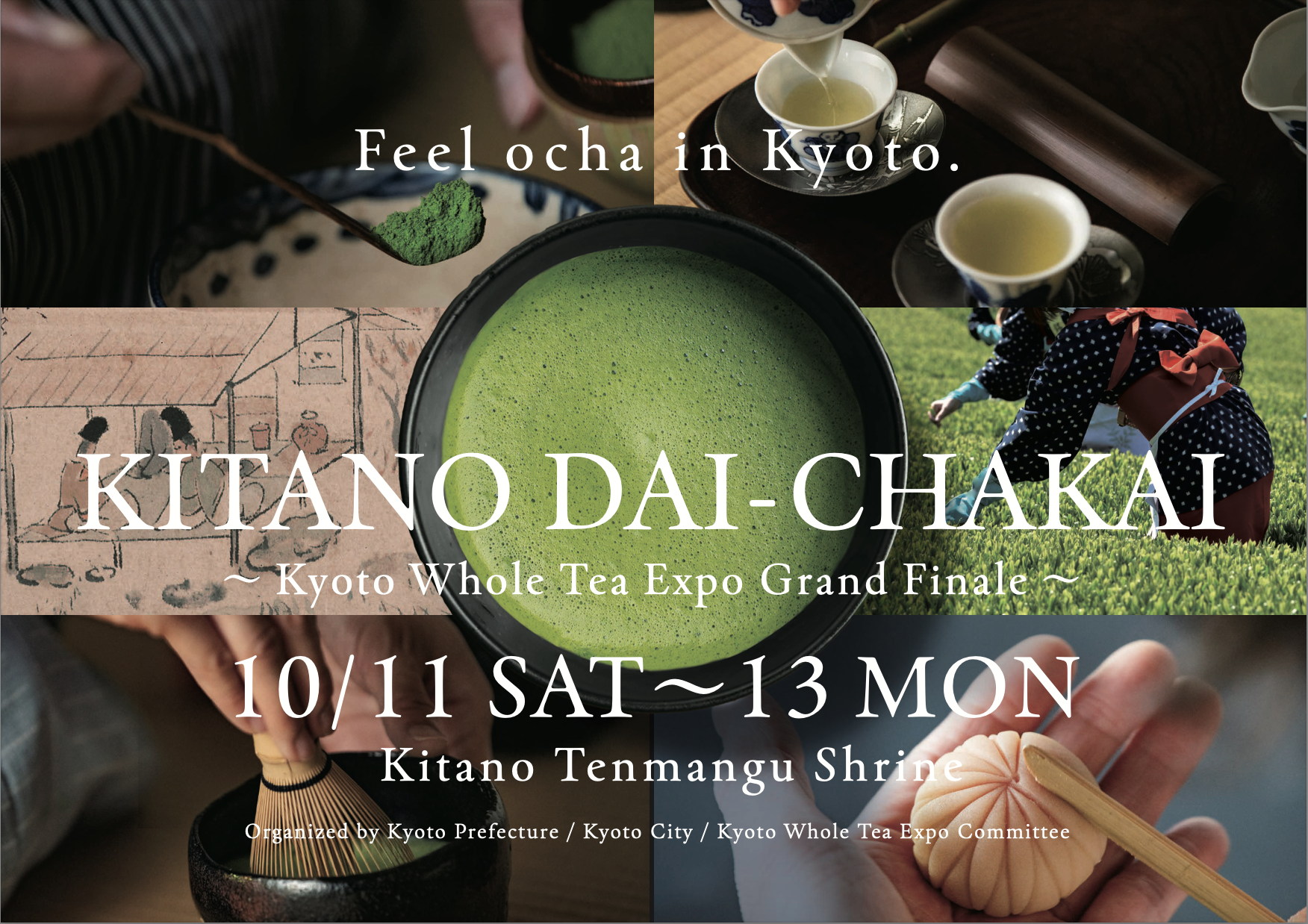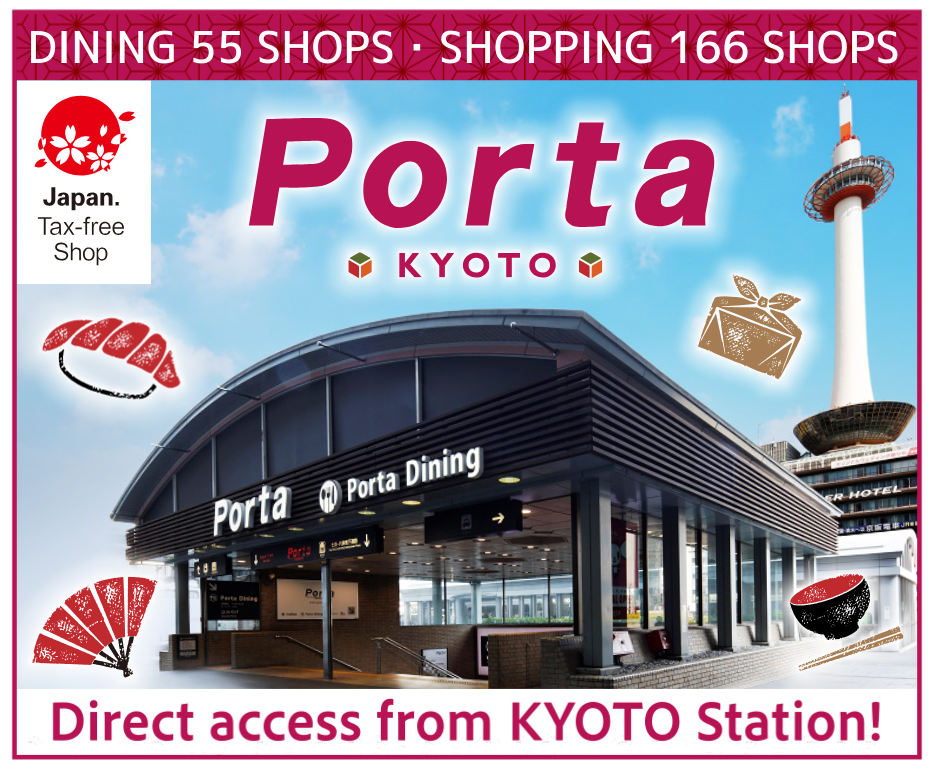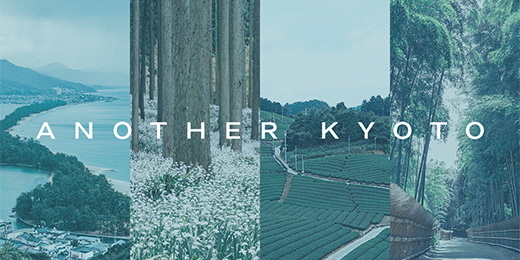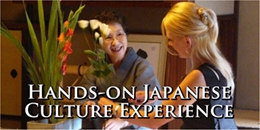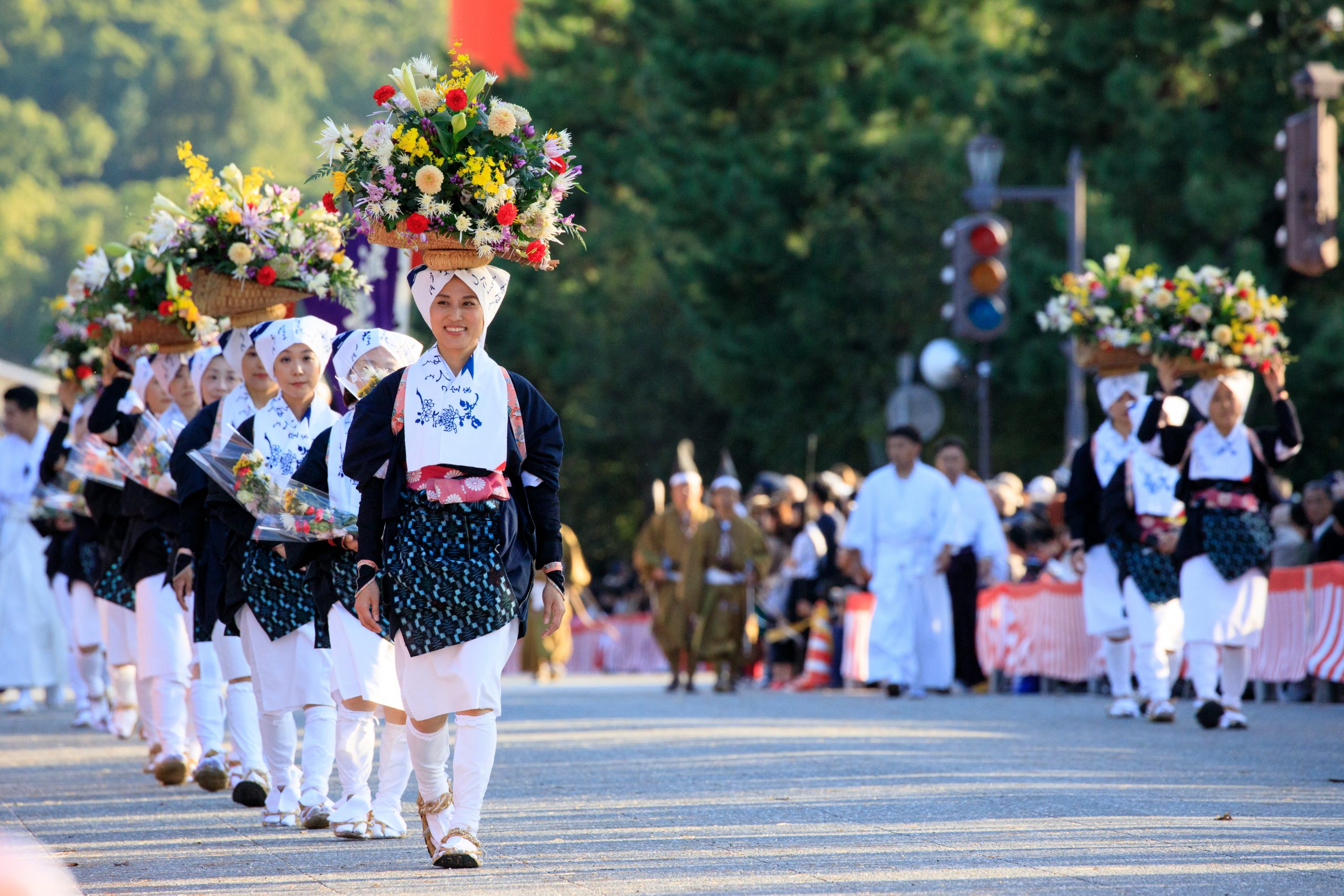
In this article
What is the Jidai Matsuri Festival?
The Jidai Matsuri Festival is one of Kyoto’s three greatest festivals, alongside the Aoi Matsuri Festival in May and Gion Matsuri Festival in July. The Jidai Matsuri Festival procession depicts historical periods, eras and major events in reverse chronological order, spanning from the Meiji Restoration in the early 19th century to the Heian period in the 8th century.
The spirits of Emperor Kanmu, who transferred the capital to Kyoto, and Emperor Komei, the last emperor to rule from Kyoto, are transported in sacred carriages called “Gohoren” as a form of ritual meant to help Kyoto remain secure, developed, and prosperous. The historical processions from each era accompany them during their journey from Kyoto Imperial Park back to the Heian Jingu Shrine.
The procession encompasses 8 historical periods beginning with the Meiji Restoration (1868)and ending at the Enryaku era (782 – 806). Around 20 groups with approximately 2,000 participants and 70 horses and oxen join it, forming a 2-kilometer-long parade.
12,000 costumes and ceremonial items are used in the festival to showcase the vibrant colors and pinnacle of Kyoto craftsmanship. Through meticulous research, artisans have recreated these pieces using authentic ancient materials and techniques, ensuring historical accuracy down to every thread. This festival is unique to Kyoto, which served as Japan’s capital for over 1,000 years and witnessed many of the nation’s most significant historical events.
History
In 1895, the Heian Jingu Shrine was built and the Jidai Matsuri Festival was first held as a celebration of the 1,100th anniversary of the founding of “Heian-kyo” (previous name for Kyoto). Emperor Kanmu, who transferred the capital from Nagaoka-kyo (currently the southwest suburbs of Kyoto) to Heian-kyo in 794, was enshrined in the Heian Jingu Shrine and is one of the main deities worshipped during this festival.
Commemorative shrine festivals were held from October 22nd to 24th, with support from “Heian Kosha”, an organization established by Kyoto citizens in order to manage and preserve the shrine. The Jidai Matsuri Festival originated from a procession held around the time of these commemorative events, showcasing traditional costumes from different periods of Japanese history. Initially held on October 25th, the day following the shrine festivals, the procession was moved to 22 from 1896 onward – the anniversary date of the capital’s transfer to Kyoto. Heian Jingu Shrine continues to organize the Jidai Matsuri Festival to this day.
The Route of the Procession
Kyoto Imperial Palace (12:00) → Sakaimachi Gomon (12:15) → Karasuma Marutamachi (12:30) → Karasuma Oike (12:50) → Kawaramachi Oike (13:20) → Kawaramachi Sanjo (13:30) → Sanjo Ohashi (13:40) → Sanjo Jingumichi (14:10) → Heian Jingu Shrine (14:30)
*The time written in the brackets is the estimated arrival time for the front of the procession. It takes about 2 hours for the entire procession to pass a single location.
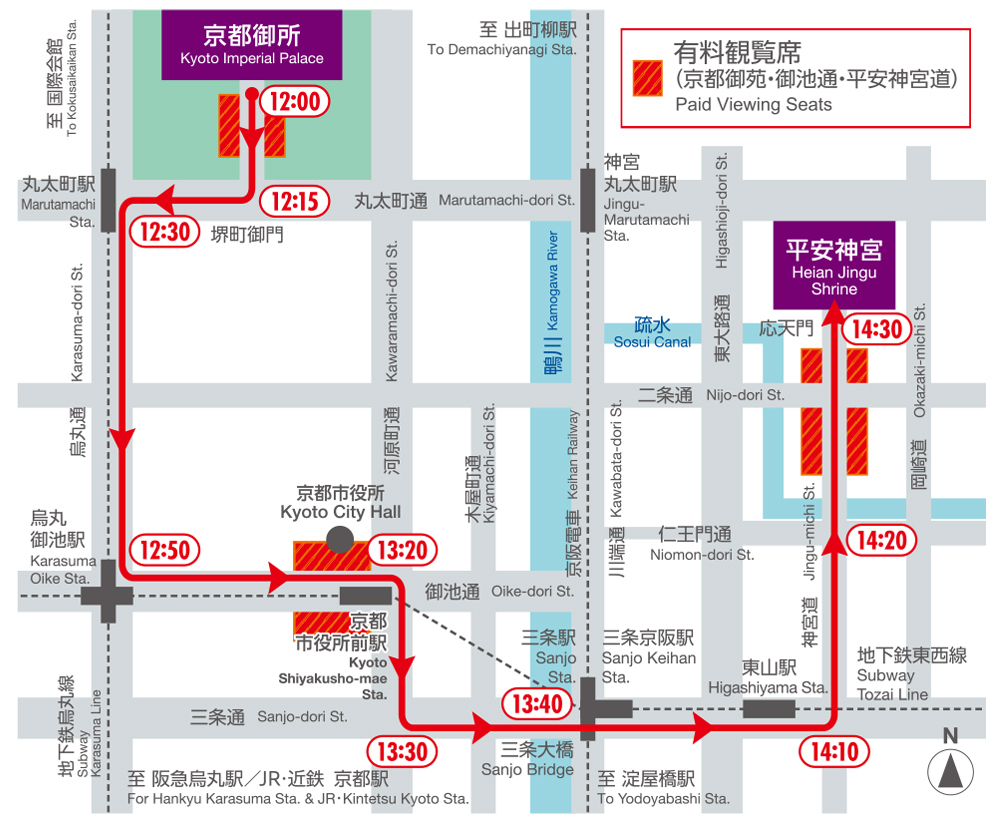
The Procession
The Meiji Restoration Period (Around 1868)
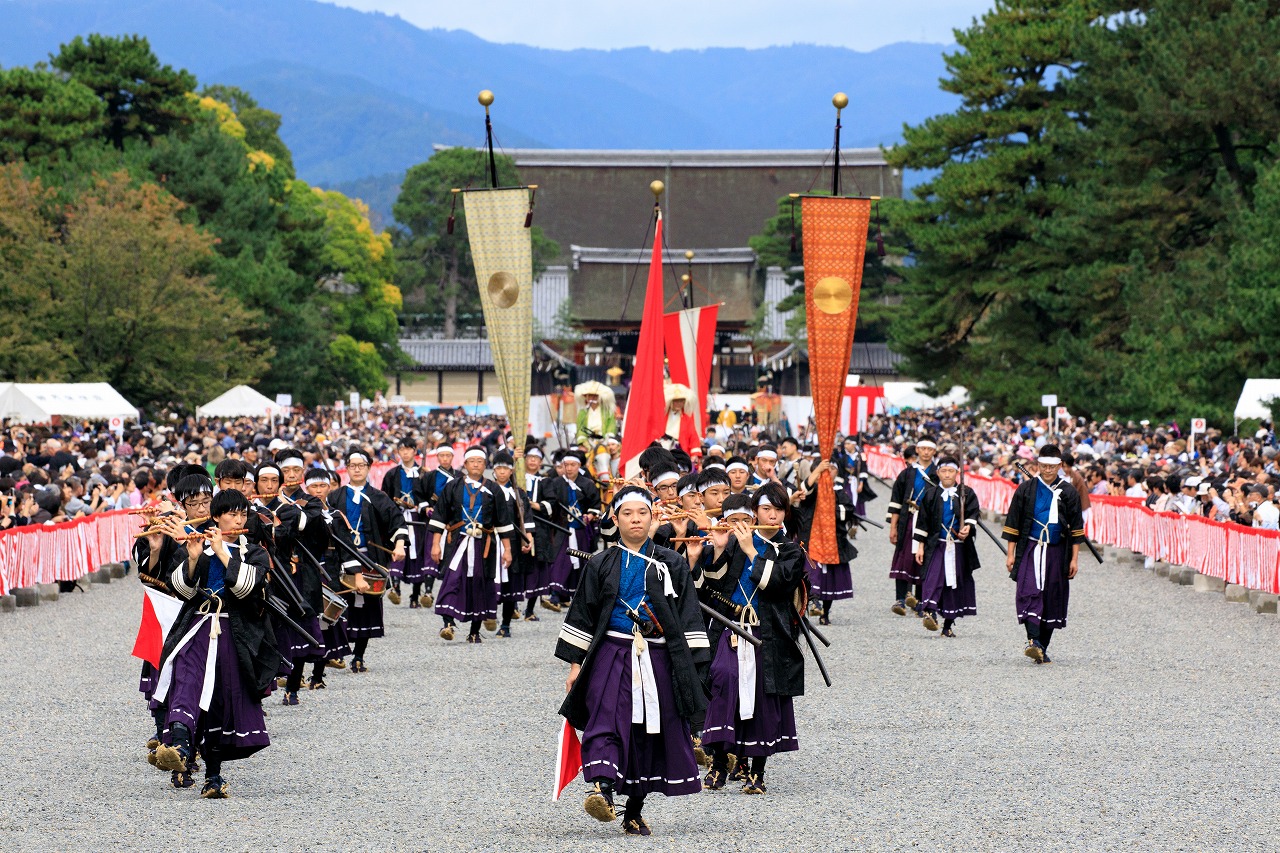
The Japanese people enjoyed nearly 260 years of peaceful rule under the Tokugawa Shogunate. However, during this time, the principle of imperial reverence grew popular among the people, driving a strong movement aimed at restoring the power of the emperor as the head of the country. Many young farmers from the Yamaguni Village in Kyoto Prefecture volunteered to join, forming a military corps and fighting together with the Imperial Forces against the shogun’s army.
Edo Period (1603 – 1868)

The Edo period procession begins with the Tokugawa Shogun’s deputies, who regularly traveled from Edo (old name for Tokyo) to visit the emperor in Kyoto for important imperial ceremonies such as the New Year celebrations and coronations. Footmen carrying spears and traveling boxes toss them from one to another while marching. The second part of the procession presents a number of famous women of the time, different in social status, age and style.
Azuchi-Momoyama Period (1568 – 1603)
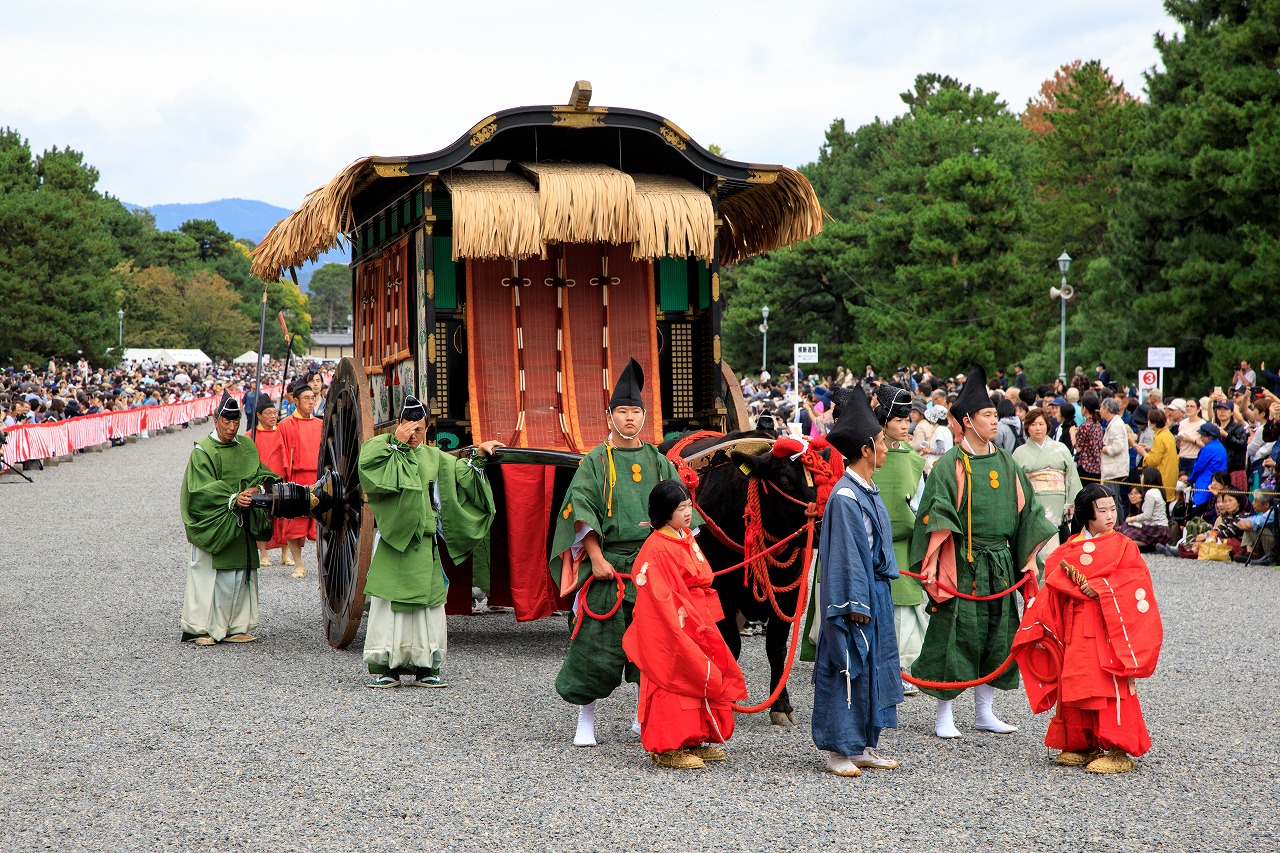
After a long and turbulent period of civil war with numerous lords fighting to conquer the country, Hideyoshi Toyotomi emerged victorious and unified Japan under his rule after succeeding Oda Nobunaga. This procession represents one of the most lavish scenes from the era, depicting Hideyoshi accompanying his son Hideyori during the celebration of his coming-of-age ceremony. They traveled to Kyoto, joined by many retainers. They are followed by the procession of Oda Nobunaga, the commander that first nearly overtook and unified the country.
Muromachi Period (1338 – 1573)
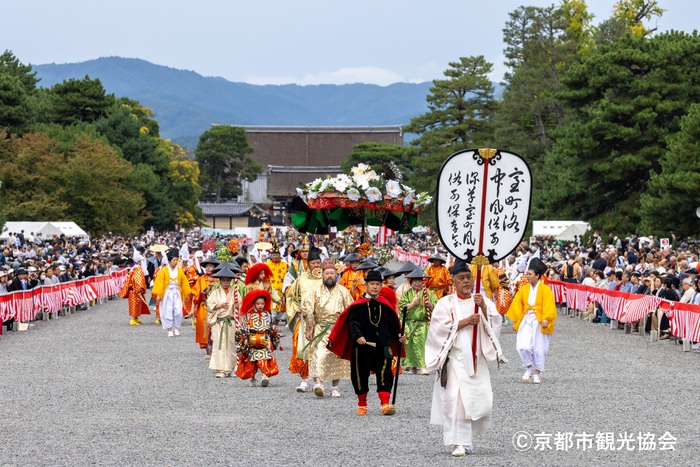
The first part of the Muromachi procession showcases the Ashikaga shogunate, featuring mounted magistrates and distinctive clothing styles worn by court nobles, doctors, and other high-ranking individuals. The second part of the procession portrays Muromachi customs, reenacting Furyu-odori, a popular dance at the time.
Yoshino Period (1333 – 1392)

The procession of the famous military commander, Kusunoki Masashige, triumphantly welcoming the exiled Emperor Godaigo upon his return to the capital in 1333. The varied and beautifully crafted armor of the era is displayed during this part of the procession.
Procession of Women from the Middle Ages (1185-1603)
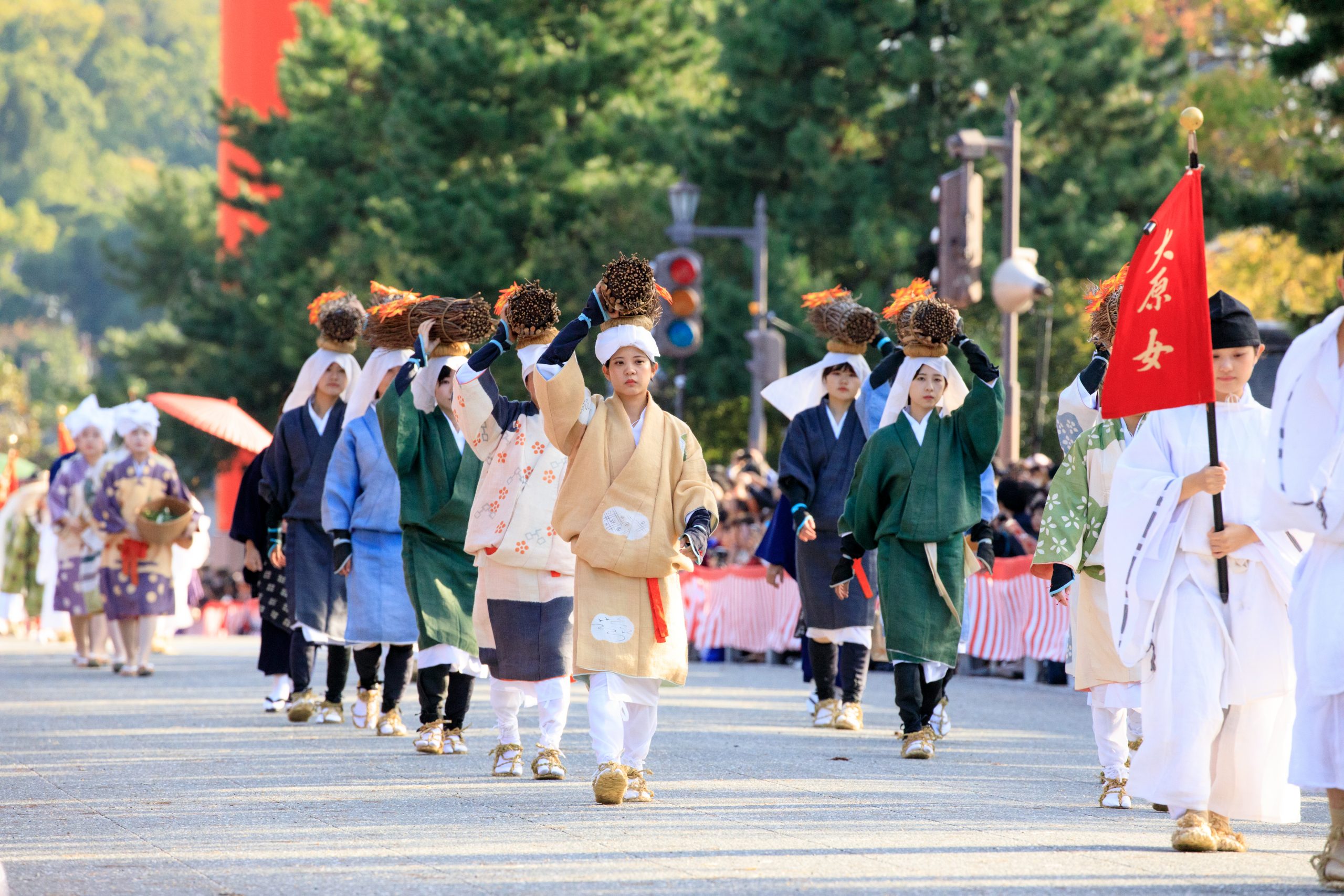
This section of the procession features various groups and notable women from the period, led by peddlers from Kyoto’s Ohara and Katsura regions. The women of Ohara carry firewood and charcoal on their heads, which they would sell in the city. Behind them walk the women of Katsura, distinguished by their short kimonos and hair tied in a white cloth, who sold various goods such as sweetfish and candies.
Kamakura Period (1192 – 1333)
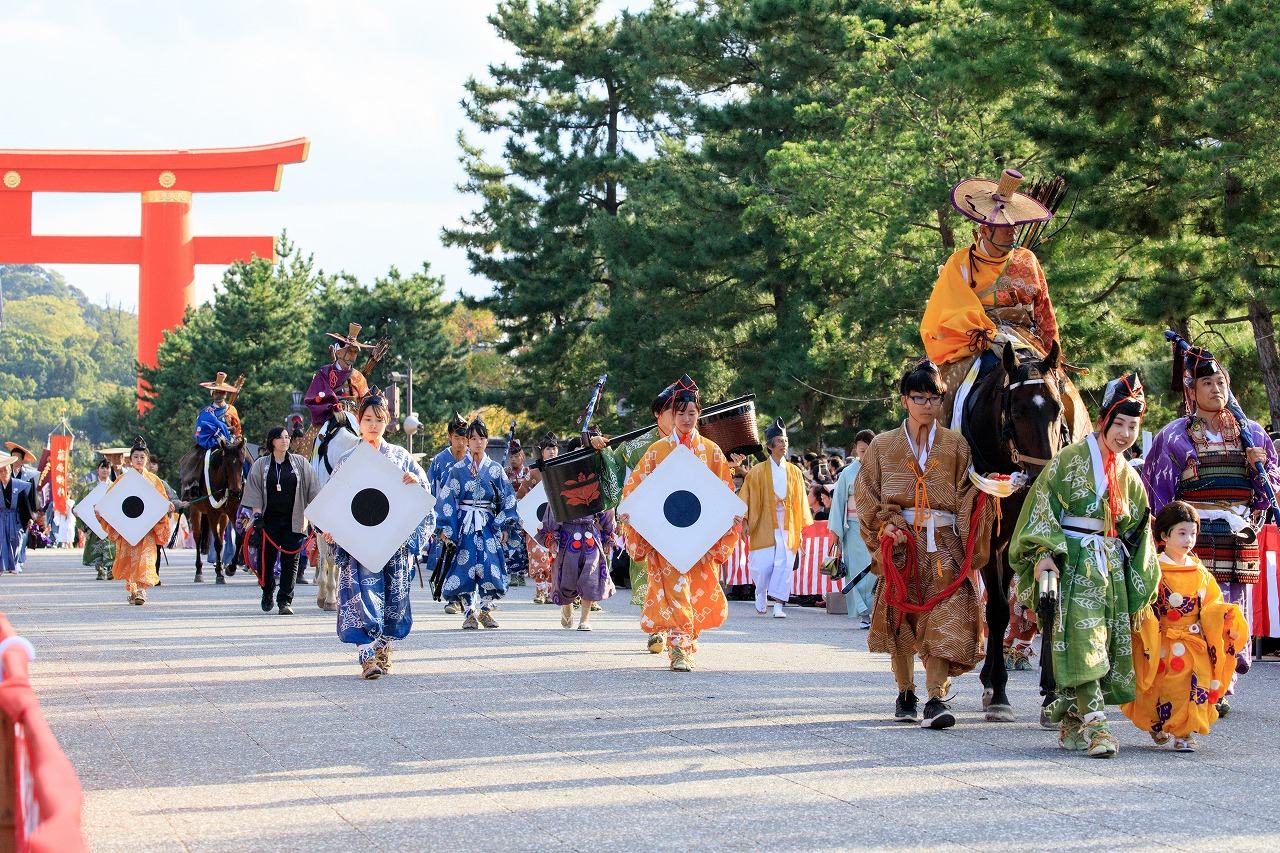
When former Emperor Gotoba attempted to retake the power from the Kamakura military government, he gathered warriors from neighboring provinces under the pretense of training for a Yabusame* contest. The participants of this group wear hunting clothes with feet covered in deer skin.
*Yabusame is a type of mounted archery practiced in Japan since the Heian period.
Fujiwara Era (897 – 1185)
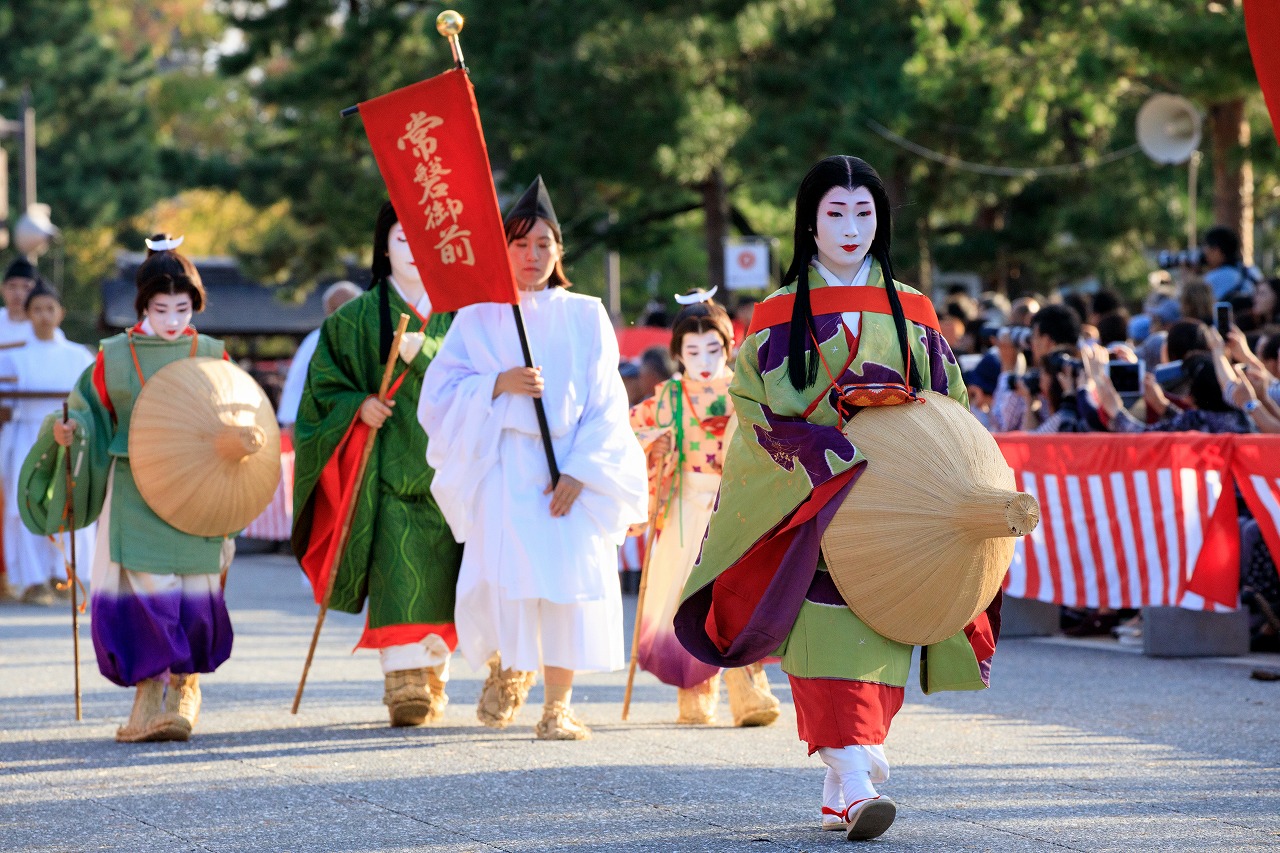
The Fujiwara era began in the middle of the Heian period (794 – 1185), a time considered to be the peak of aristocratic culture and classical Japanese art – especially writing and poetry. During this time, the Fujiwara family virtually monopolized all high government positions and were able to lead a prosperous and influential life. Clothing has changed greatly during this period, slowly moving away from Chinese influence and taking on a more distinctly Japanese style.
Enryaku Era (782 – 806)

The above photo depicts the procession of warriors of this era, led by a commander modeled after the Shogun of this time – Sakanoue no Tamuramaro. Following the military officers comes a procession of civil officials who served at the imperial court when Heian-kyo was established as the new capital. The attire of this era still retains the distinctive Chinese Tang dynasty style.
Photos by TORU MIYAKE
